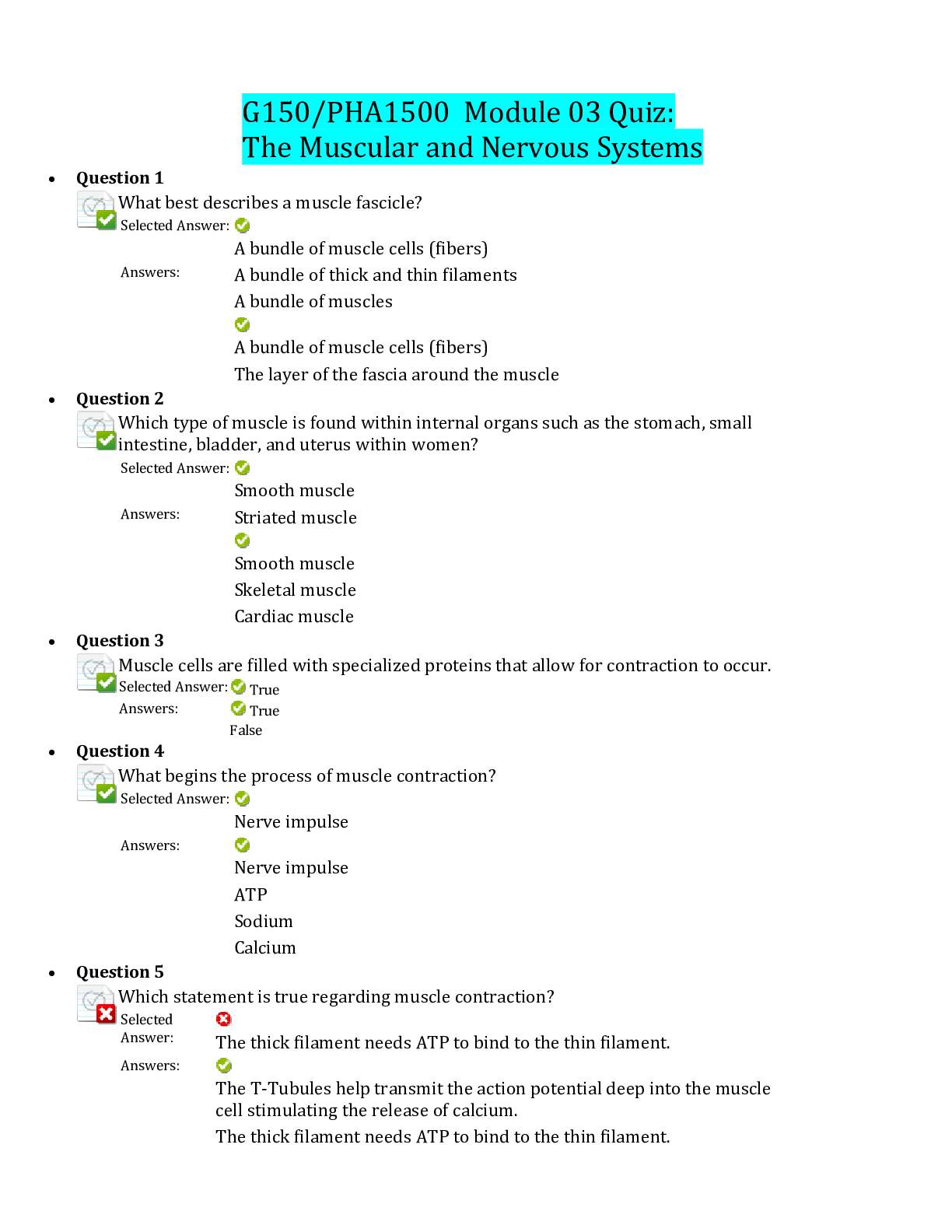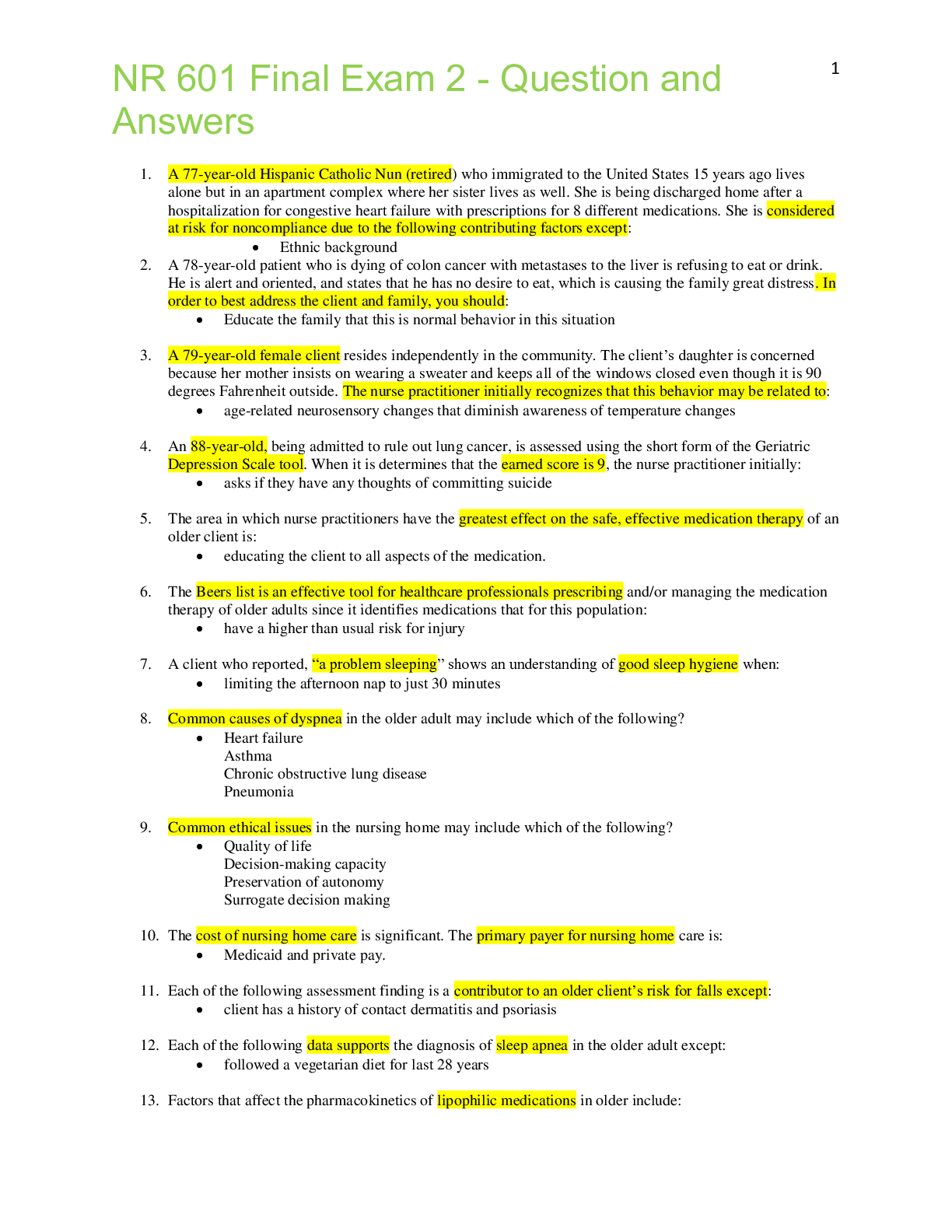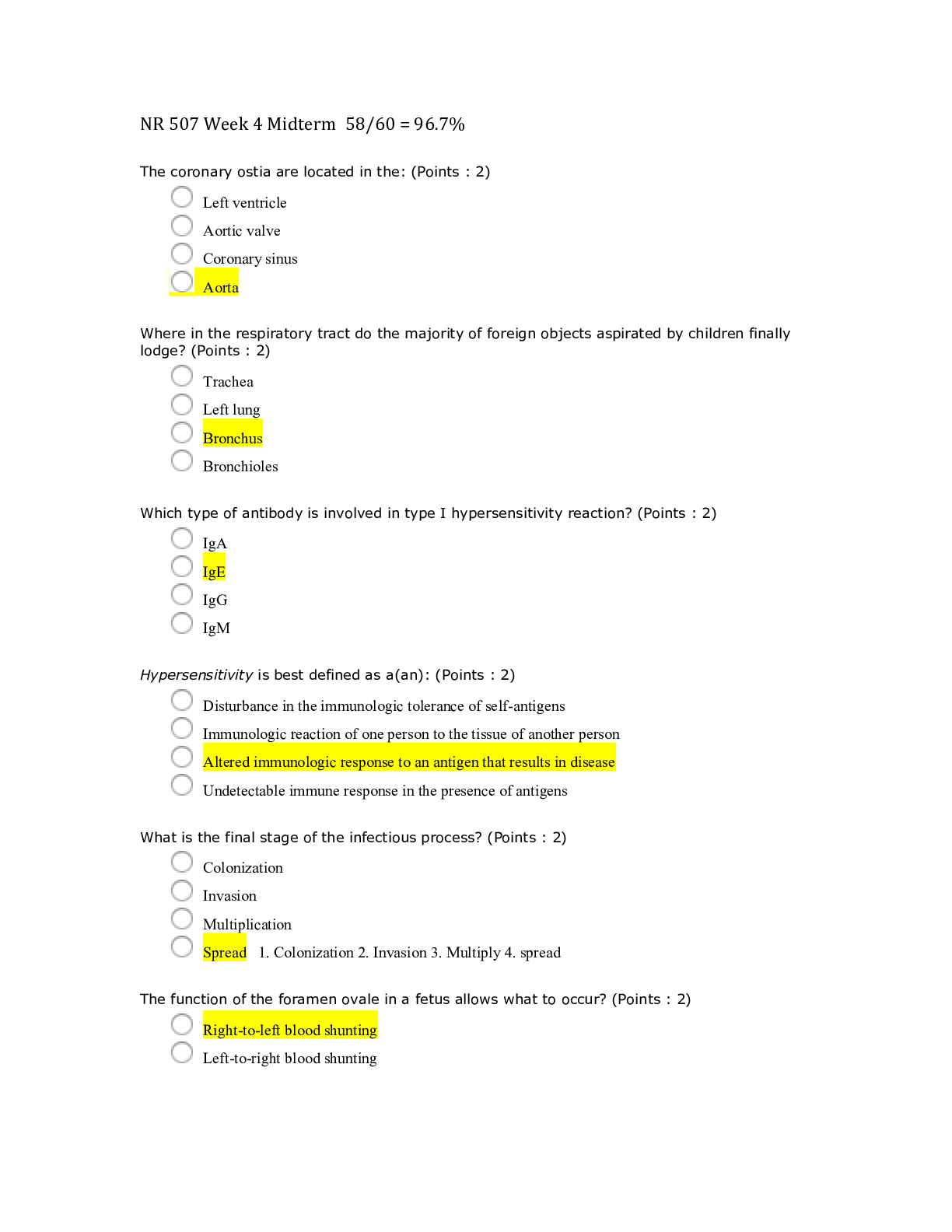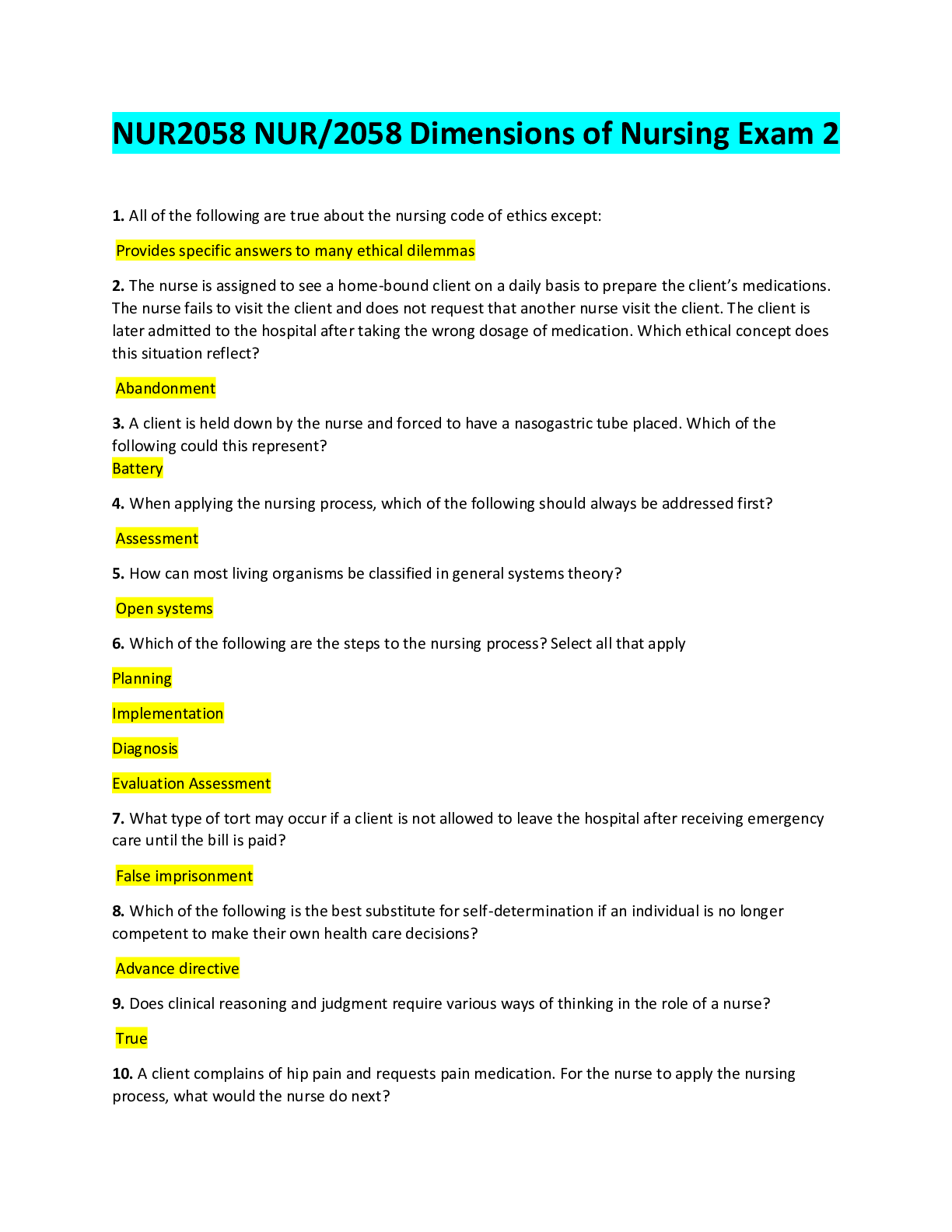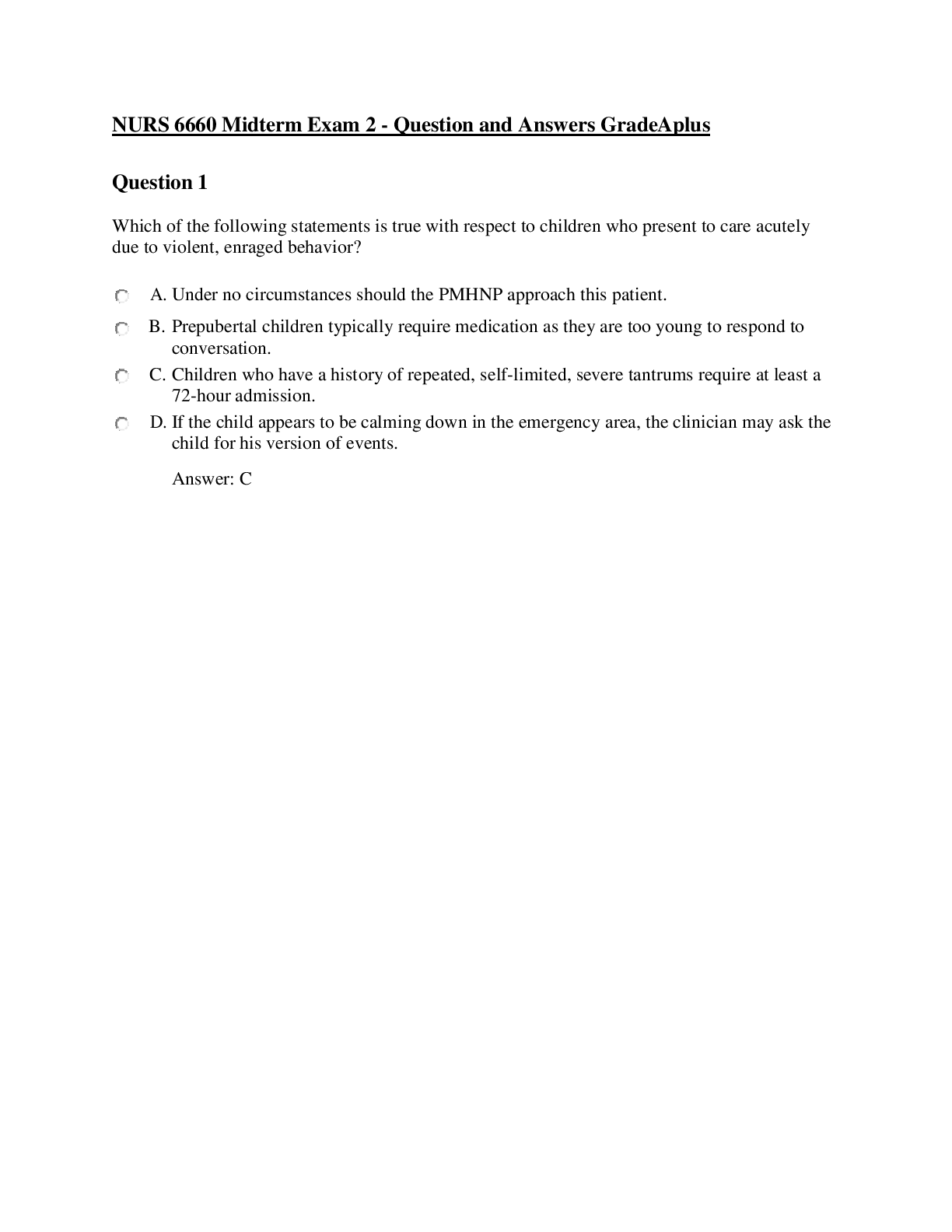*NURSING > EXAM > NUR 3524 Chronic Exam 2 - Care of Patients with Dysrhythmias - Rasmussen College | NUR3524 Chronic E (All)
NUR 3524 Chronic Exam 2 - Care of Patients with Dysrhythmias - Rasmussen College | NUR3524 Chronic Exam 2 - Care of Patients with Dysrhythmias
Document Content and Description Below
NUR 3524 Chronic Exam 2 - Care of Patients with Dysrhythmias - Rasmussen College NUR3524 Chronic Exam 2 - Care of Patients with Dysrhythmias CHAPTER 34 Care of Patients W/Dysrhythmias • SA ... Node- right atrium near superior vena cava. The heart’s primary pacemaker. When it fires the atrium contracts and this is the P wave • AV Node- beneath right atrial endocardium (near tricuspid) Slow down impulses- shown as PR segment • Automaticity- pacing function- the ability of cardiac cells to generate an electrical impulse spontaneously & repetitively • Excitability- the ability of non-pacemaker heart cells to respond to an electrical impulse • Conductivity- ability to send an electrical stimulus • Contractility- the mechanical activity of the heart Effects of Electrolytes on ECG • Na+ (decreased slows and widens QRS) Normal 135-145 • K+ (decreased flattens T waves and Increased peak T Waves) Normal 3.5 - 5.0 • Ca+ (increases shorten QRS) Normal 8.6 – 10.3 • Mg+ (decreased depress ST and ventricular arrhythmias) Normal 1.5 – 2.5 • ECG- remind patient to be still in semi-reclined position, breathe normal PR Wave- 0.12 -0.20 secs QRS Duration- 0.04-0.10 secs (If narrow 0.10 or less =impulse wasn’t formed in ventricle & is therefore supraventricular) ST Segment- if elevated or depressed more than 1 mm it’s significant If above line = MI, pericarditis, hyperkalemia If below line= hypokalemia, MI, or Ventricular hypertrophy Dysrhythmias Premature Complexes When cell other than SA becomes irritable & fires. The abnorm focus is called etopic focus. May be asymptomatic or feel palpitations. May occur repetitively in rhythmic - - - - - - - - - - - - - - - - - - - • CALCIUM CHANNEL BLOCKERS- Verapamil & Dilitiazem- watch for orthostatic hypotension. Used for AF and atrial flutter • CLASS “OTHER”- ♣ Digoxin- used for AF & atrial flutter. Assess apical HR before giving. Report nausea, paresthesia, confusion, or visual disturbances as this could be digoxin toxicity ♣ Atropine Sulfate- for bradycardia. ♣ Adenosine- Used for Paroxysmal SVT. Have crash cart! Short period of asystole is common after administering • Vaugn Williams Classification-system to categorize meds [Show More]
Last updated: 1 year ago
Preview 1 out of 10 pages
Instant download
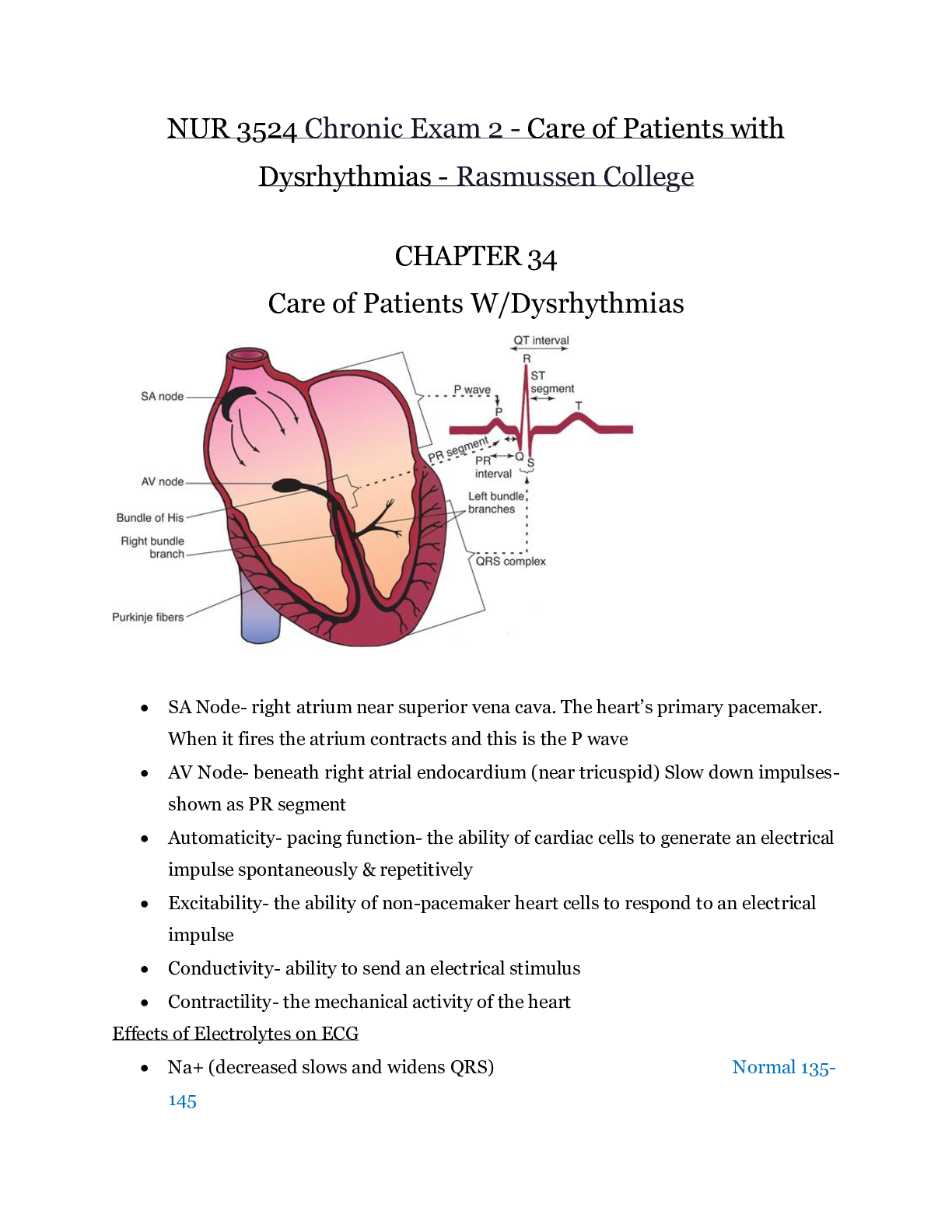
Buy this document to get the full access instantly
Instant Download Access after purchase
Add to cartInstant download
Reviews( 0 )
Document information
Connected school, study & course
About the document
Uploaded On
Jul 13, 2020
Number of pages
10
Written in
Additional information
This document has been written for:
Uploaded
Jul 13, 2020
Downloads
0
Views
41

















